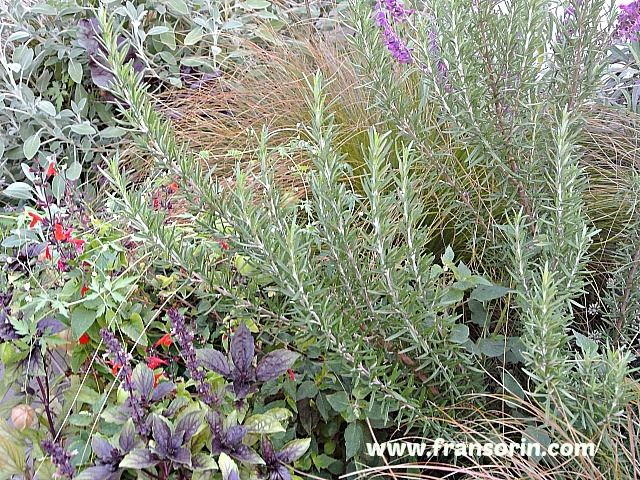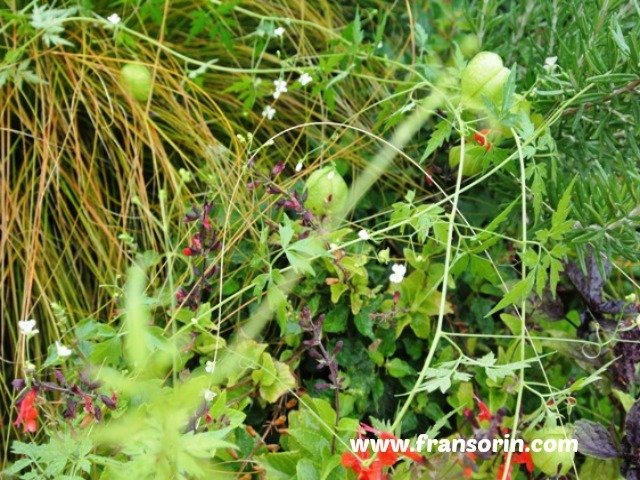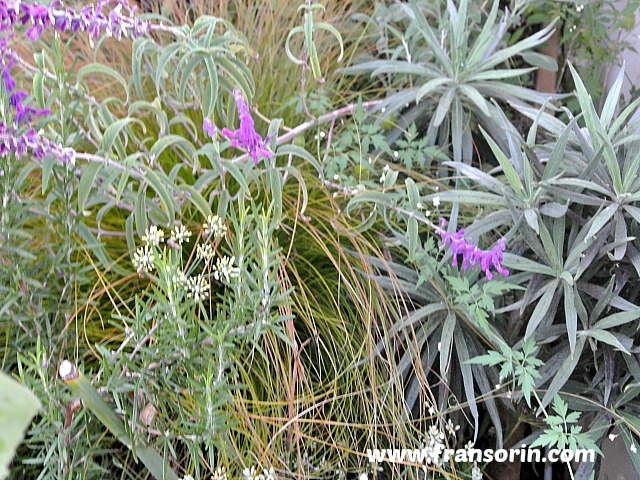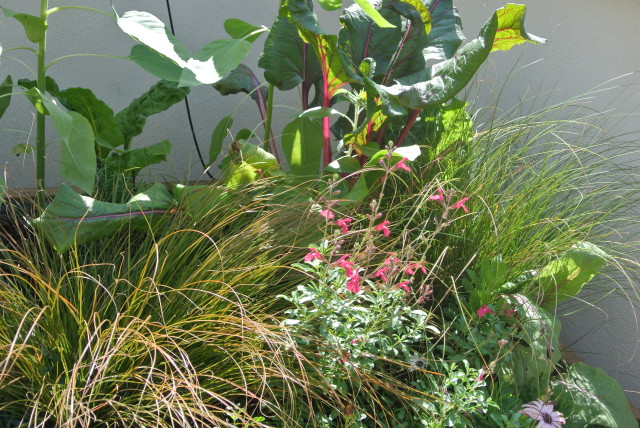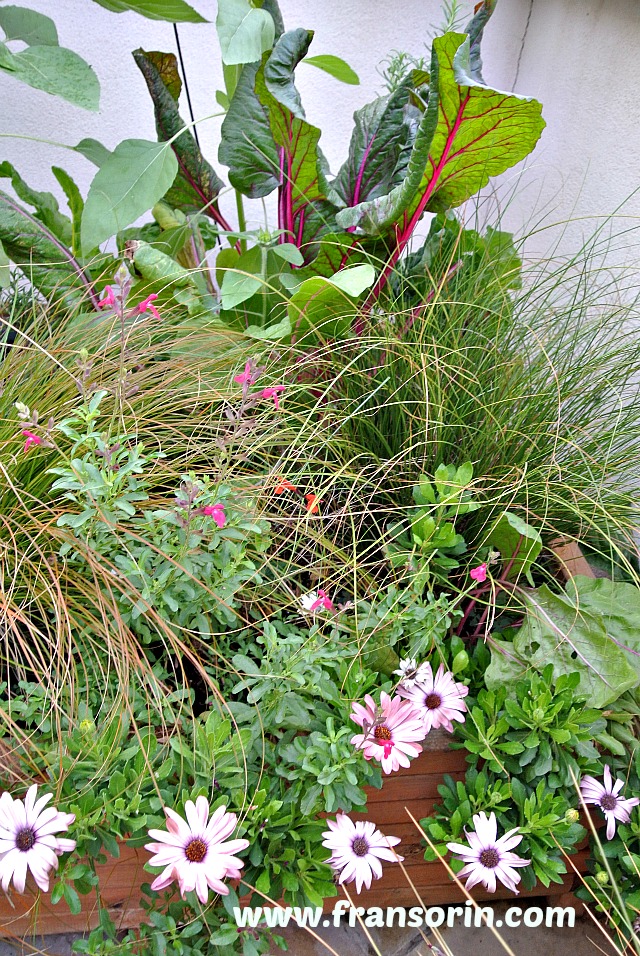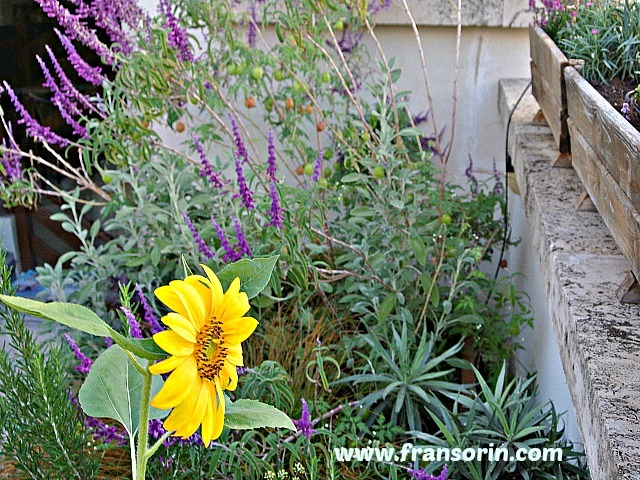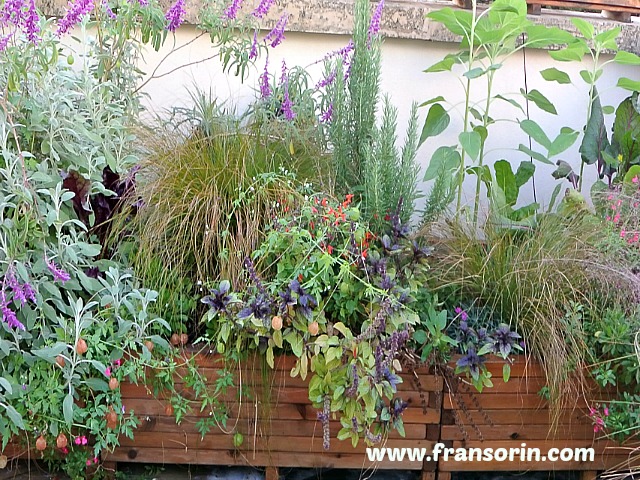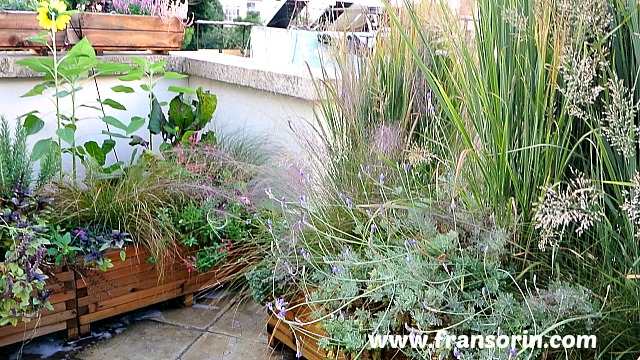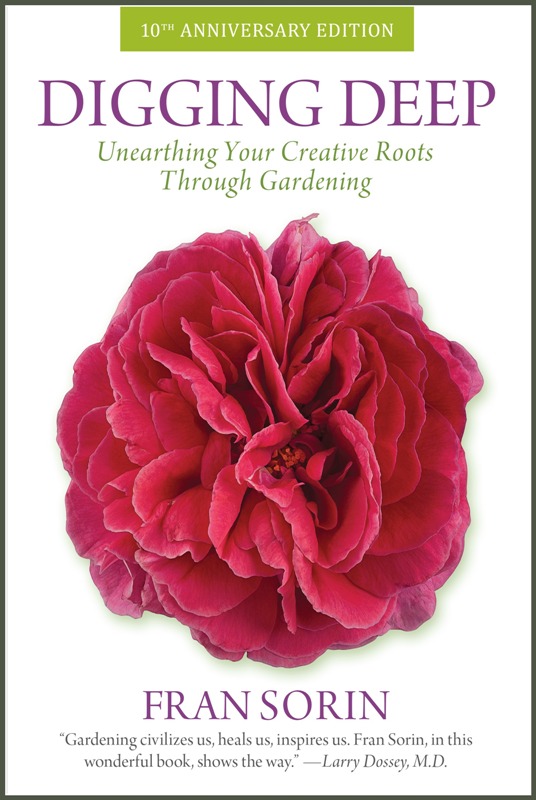This October, vibrant color continues on my rooftop garden in the Mediterranean. For those of you who don’t know, I actually garden in teak and pine containers, built to give the appearance, as much as possible, of garden beds (necessity is the mother of invention).
For the purpose of this article, I’ve chosen to focus on one area that I originally used as a haphazard cutting/cottage garden. It is 12′ x 3′. Over the past few years, it organically evolved into a properly designed garden bed, due to the planting of 3 Carex ‘Prairie Fire’ that took shape and matured.
So, here’s what’s happening in this tiny corner of my garden during October 2014.
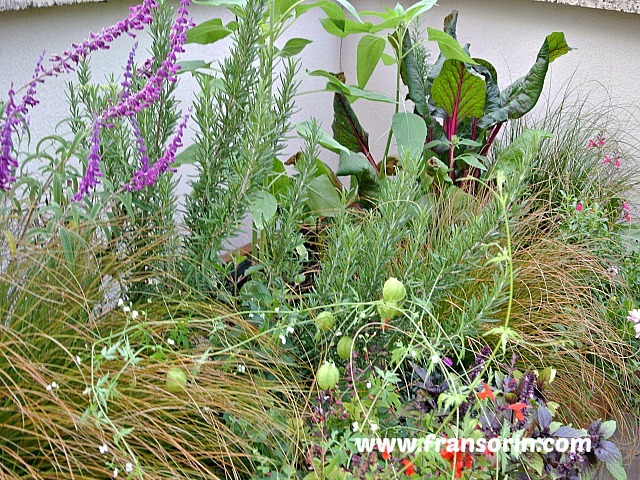
Salvia leucantha, Rosemary, Salvia greggii, Carex ‘Prairie Fire’ Physalis alkekengi (Chinese lantern), Swiss Chard ‘Flamingo Pink’
6 TIPS
1. Select one or two colors of leaves that will give you bang for the buck for at least 3 seasons. The golden/orange hues of Carex ‘Prairie Fire’ and the Silver of the salvia, rosemary, and echium give this small area a foundation- regardless of what’s in bloom.
2. Use at least 3 of one specimen with outstanding leaves and shapes– I chose Carex ‘Prairie Fire’ which has proven to be a knock-out.
3. Let the leaf shapes, textures, and sizes take front and center stage throughout the season. One good way to see how successful you’re at doing this is to take some photos in black and white.
4. Feel free to experiment with colors of blooms. If anyone had told me that I would be juxtapositioning red, pink, and orange flowers in a small area 5 years ago, I would have gagged. Now, not so. It’s amazing when you use the leaf palette as your base how it frees you up in other areas.
5. Underplant with edibles and annuals to keep the color going throughout the season. I love the fact that the dill is re-blooming, that Bulls Blood Beet is just coming into its own, and that a colony of sunflowers that I planted in September are just beginning to bloom.
6. Repeat shapes of flowers. Most gardeners know that repeating the colors of flowers is pleasing to the eye. But repeating the shapes of flowers is especially important in a small garden. I have used a lot of salvias: Although they are pink, purple, and red, their similar shapes adds a consistency to the design.
NOW IT”S YOUR TURN. What’s happening in your garden this October? And to see what’s happening in gardens throughout the world, check out: Garden Blogger’s Bloom Day on May Dream’s Garden blog.
ONE LAST FUN THING-
For those of you who haven’t heard, the updated 10th Anniversary Edition of my classic book, Digging Deep: Unearthing Your Creative Roots Through Gardening, was just published in paperback over the weekend. For anyone who would like a review copy for your blog or to write a review on Amazon or Goodreads, please contact me at: fran.sorin@gmail.com and write in subject line- WOULD LIKE REVIEW COPY OF DIGGING DEEP.

